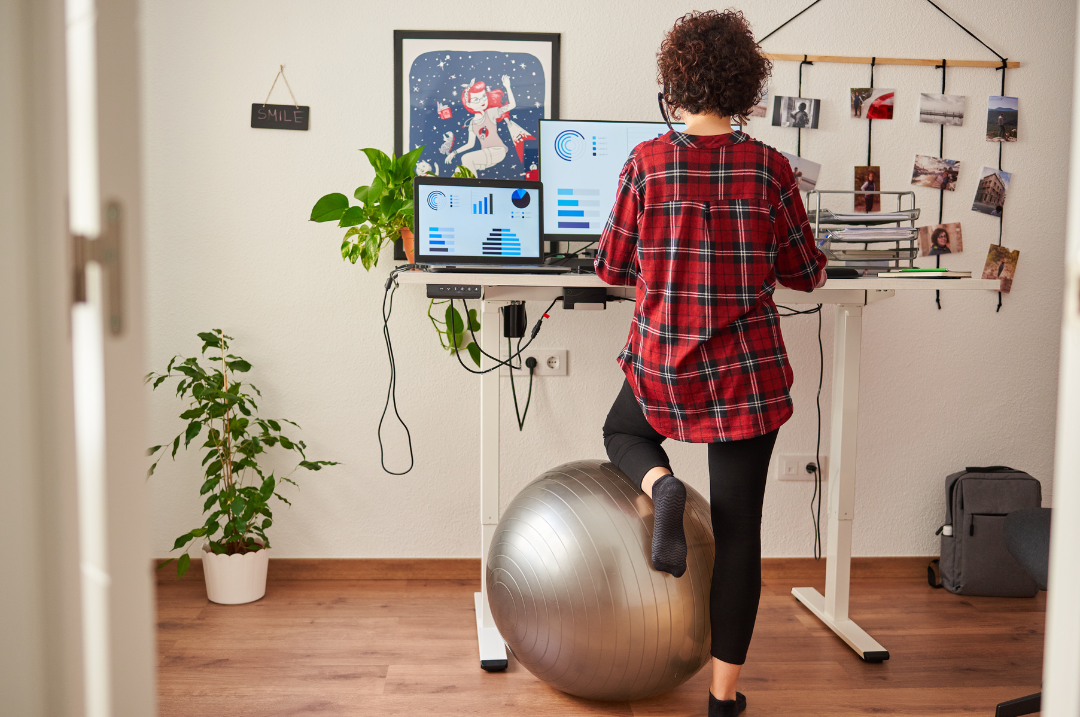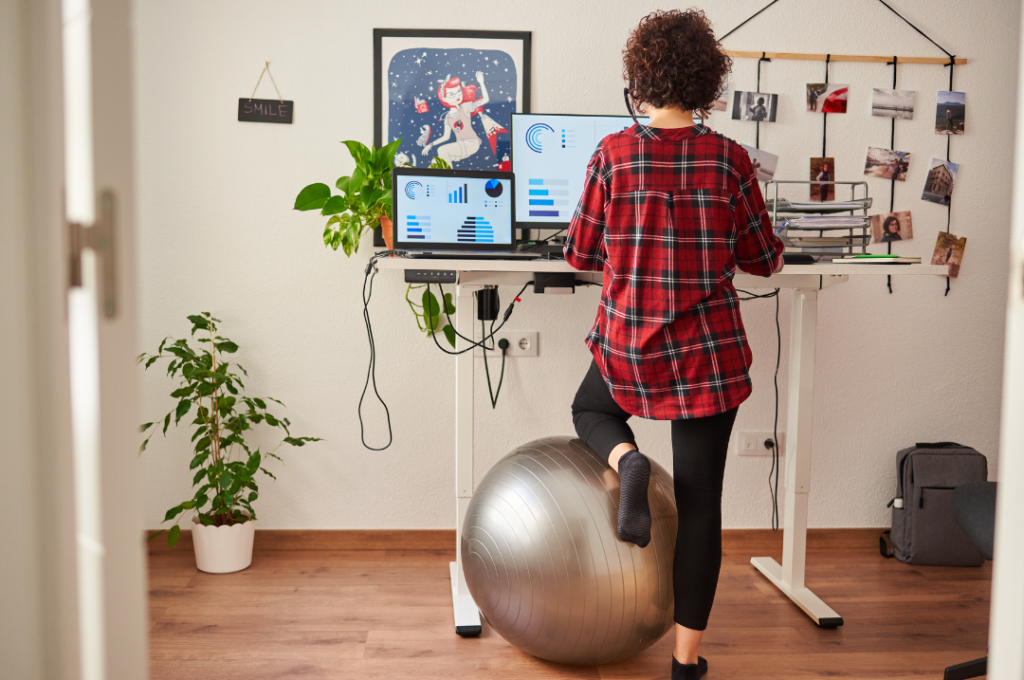


Whether you’re in the office or working remotely, a lot of our workforce spends a significant portion of their day sitting at a desk, often
in front of a computer. While sitting may seem natural and harmless, poor posture has the potential to lead to various health issues,
including discomfort, pain, and musculoskeletal problems that require professional care. Yes, the way you position your hips, legs, and feet
when sitting on a chair can significantly impact your overall well-being. Here’s How.
Your Hips
There are two main elements of poor posture when it comes to the hips. Sitting with a slouched hip posture, where the hips are rolled backwards, can lead to excessive pressure on the lumbar spine. This position places extra strain on the lower back muscles, potentially causing lower back pain and discomfort. Sitting with elevated hips, where your hips are higher than the knees due to an inadequate chair height can result in pressure on your hip flexors. Over time, this can lead to tightness and discomfort in these muscles.
Your Legs
Sitting with your legs crossed can restrict blood flow and lead to numbness and tingling in the legs. It may also place uneven pressure on the knees, potentially contributing to knee pain and long-term joint issues. Similarly, keeping your legs extended straight under the desk can hinder blood circulation, causing discomfort and potentially contributing to varicose veins over time.
Your Feet
Allowing your feet to dangle without proper support can result in lower back pain and poor circulation in the legs. This posture may also lead to the development of varicose veins. Tucking your feet under the chair can also create unnecessary pressure on the knees and lead to discomfort over time.
Aim to:
If you’re experiencing pain in your feet or legs, whether that’s related to your lower limb posture or from something else – we’d love to help. Give our podiatry team a call. We’re based in Remuera, in the One Health medical building, close to Newmarket. Call us on 09 523 2333 or book online here.

We’ve all had those days — you come home after hours on your feet, kick off your shoes, and notice your ankles look puffier than usual.
Swelling in the feet, ankles, or legs (known medically as edema) isn’t always a reason to panic. It can be as simple as a
salty lunch or a long flight.
But what if it’s happening more often — or seems to be getting worse? Swelling can sometimes be a sign of something more serious. Here’s
what could be going on and when to check in with your doctor.
.jpg)
Every year on October 8th, the world celebrates International Podiatry Day - a day dedicated to
raising awareness about foot health and the vital role that podiatrists play in our overall well-being.
Keeping your family on their feet and helping them to walk, run, play and exceed their goals is why we love getting up in the morning.
Ground Floor, One Health Building
122 Remuera Rd, Remuera
Auckland 1050, New Zealand
| MON - FRI | 7:30am – 6:30pm |
| SAT | 8:30am – 4:30pm |
| SUN | Some availability |
Make an Appointment
Online Schedule
Our virtual receptionist is available 24/7 to help with general questions, booking requests, and clinic information, even when our team is busy, or it's after hours.
Whether you're calling us or using our website, you'll get fast assistance any time of day. And if your query needs a personal touch, a member of our team will follow up as soon as possible.
If you’d like to see a podiatrist who speaks your preferred language, just give us a call and we’ll help you book.